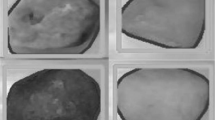Abstract
The stacking problem is a hard combinatorial optimization problem with high practical interest in, for example, steel storage or container port operations. In this problem, a set of items is stored in a warehouse for a period of time, and a crane is used to place them in a limited number of stacks. Since the entrance and exit of items occurs in an arbitrary order, items may have to be relocated in order to reach and deliver other items below them. The objective of the problem is to find a feasible sequence of movements that delivers all items, while minimizing the total number of movements.
We study the scalability of an exact approach to this problem, and propose two heuristic methods to solve it approximately. The two heuristic approaches are a multiple simulation algorithm using semi-greedy construction heuristics, and a stochastic best-first tree search algorithm. The two methods are compared in a set of challenging instances, revealing a superior performance of the tree search approach in most cases.












Similar content being viewed by others
References
Avriel, M., Penn, M., Shpirer, N., & Witteboon, S. (1998). Stowage planning for container ships to reduce the number of shifts. Annals of Operations Research, 76, 55–71.
Avriel, M., Penn, M., & Shpirer, N. (2000). Container ship stowage problem: complexity and connection to the coloring of circle graphs. Discrete Applied Mathematics, 103(1–3), 271–279.
Caserta, M., Voß, S., & Sniedovich, M. (2011). Applying the corridor method to a blocks relocation problem. OR Spectrum, 33, 915–929.
Dekker, R., Voogd, P., & Asperen, E. (2007). Advanced methods for container stacking. In K. H. Kim & H.-O. Günther (Eds.), Container terminals and cargo systems (pp. 131–154). Berlin: Springer.
Gavril, F. (1973). Algorithms for a maximum clique and a maximum independent set of a circle graph. Networks, 3, 261–273.
Golumbic, M. C. (2004). Annals of discrete mathematics: Algorithmic graph theory and perfect graphs. Amsterdam: Elsevier.
Hartmann, S. (2004). A general framework for scheduling equipment and manpower at container terminals. OR Spectrum, 26, 51–74.
Kim, K. H., & Hong, G.-P. (2006). A heuristic rule for relocating blocks. Computers and Operations Research, 33, 940–954.
Law, A. M. (2006). Simulation modeling and analysis (4th ed.). New York: McGraw-Hill.
Pedroso, J. P., & Kubo, M. (2010). Heuristics and exact methods for number partitioning. European Journal of Operational Research, 202, 73–81.
Pochet, Y., & Wolsey, L. A. (2006). Production planning by mixed integer programming. Berlin: Springer.
Rei, R. J., Kubo, M., & Pedroso, J. P. (2008). Simulation-based optimization for steel stacking. In H. A. Le Thi, P. Bouvry, & T. Pham Dinh (Eds.), Communications in computer and information science: Vol. 14. Modelling, computation and optimization in information systems and management sciences (pp. 254–263). Berlin: Springer.
Rei, R. J., & Pedroso, J. P. (2009). Heuristic search for the stacking problem. In A. Viana et al. (Eds.), EUMe2009, The European chapter on metaheuristics’ workshop on debating the future: new areas of application and innovative approaches, Porto, Portugal (pp. 109–114).
Rei, R. J., & Pedroso, J. P. (2012). Stacking problem instances and instance generator. Internet repository, version 1.0. http://www.dcc.fc.up.pt/~jpp/code/stacking.
Ruml, W. (2001). Stochastic tree search: where to put the randomness? In H. H. Hoos & T. G. Stützle (Eds.), Proceedings of the IJCAI-01 workshop on stochastic search (pp. 43–47).
Ruml, W. (2002). Adaptive tree search. PhD thesis. Cambridge: Harvard University.
Unger, W. (1988). On the k-colouring of circle-graphs. In R. Cori & M. Wirsing (Eds.), Lecture notes in computer science: Vol. 294. STACS 88 (pp. 61–72). Berlin: Springer.
Unger, W. (1992). The complexity of colouring circle graphs. In A. Finkel & M. Jantzen (Eds.), Lecture notes in computer science: Vol. 577. STACS 92 (pp. 389–400). Berlin: Springer.
Acknowledgements
We would like to thank Prof. Mikio Kubo, from the Tokyo University of Marine Science and Technology, Japan, for his important contributions. We would also like to thank three anonymous reviewers for their constructive comments on previous versions of this paper. The work was partially funded by PhD grant SFRH/BD/66075/2009 from the Portuguese Foundation for Science and Technology (FCT).
Author information
Authors and Affiliations
Corresponding author
Rights and permissions
About this article
Cite this article
Rei, R., Pedroso, J.P. Tree search for the stacking problem. Ann Oper Res 203, 371–388 (2013). https://doi.org/10.1007/s10479-012-1186-2
Published:
Issue Date:
DOI: https://doi.org/10.1007/s10479-012-1186-2



